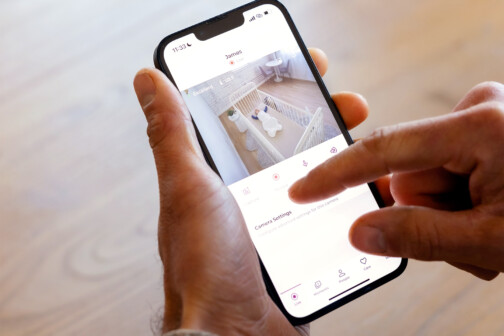From June/July 2023

With Scott Flannery, UnitedHealthcare Employer & Individual Plans of North Texas and Oklahoma; David Goldfarb, DSG Benefits Group; Luke Hejl, TimelyCare; Jessie Quick, Blue Cross and Blue Shield of Texas; Anthony Placencio, RSM US LLP
What role do employers have in the overall healthcare ecosystem, particularly when it comes to cost control, improving health equity, and holding providers accountable for quality outcomes?
Scott Flannery: Employers play several roles, but it starts with implementing plan designs and having an administrator best suited to engage and incent employees to make optimal healthcare decisions. Steering employees to the highest quality, most efficient providers creates more satisfied employees, creates less absenteeism, and lowers overall costs. It is imperative that employers explore and understand the innovation they have available to control costs, improve health, and hold providers accountable. Innovation, like high-performing network options, is just one example.
Jessie Quick: Healthy employees are the backbone of a thriving company. We consider ourselves a partner with customers to attract, support, and retain their diverse workforce. An innovative, quality benefits package is an investment, not just in the short-term to retain quality talent. Long-term, employers are facilitating access to preventive care, setting the foundation for their employees to build a relationship with a primary care physician and offering health education that can impact generations. BCBSTX offers employers solutions to structure affordable plans and incentivize wellness initiatives that drive better health outcomes for Texans.
Anthony Placencio: Healthcare expenditures represent approximately 20% of gross domestic product in the United States. Employers play a substantial role in driving that figure. Luckily, many health-tech and med-tech companies are available in the marketplace to partner with employers to provide solutions that not only control costs but enable health equity measures and can collaborate with physicians and care providers to ensure the right level of care is provided to enhance the quality of the care outcomes desired.
How has the trend of care moving out of the hospital and into the home impacted your business?
Luke Hejl: As the leading virtual health and well-being provider in higher education, TimelyCare (formerly TimelyMD) has seen rapid adoption of telehealth as consumers have grown more comfortable with this modality of care. Part of that increasing comfort is due to the pandemic, which validated and accelerated the adoption of telehealth by about five or six years. Due to its convenience, patients appreciate the convenience, speed, and accessibility virtual care offers. While our business has scaled, our services have evolved, our impact has grown, and our vision to help students be well and thrive has not changed.
Scott Flannery: Site of service movement will have a huge impact on our business in helping to drive down the total cost of care for the employers we serve. It has become very clear that moving care to lower-cost sites of service, like homecare, can lead to quality outcomes, lower overall costs, and greater patient satisfaction while creating value for the provider delivering the service. Simply stated, there is an appropriate setting for care, and it is our role to help employers and their employees optimize that without sacrificing quality.
Anthony Placencio: We’ve seen this trend in the healthcare industry positively impact consumers and employees as care providers and home recovery care companies collaborate to enhance and improve the care for consumers at the convenience of their home. Hospitalization or recovery at-home programs enable consumers the ability to recover more efficiently at home than in a hospital setting and can help reduce the burden care teams in a hospital setting. This may allow consumers in the workforce to get back on their feet and working sooner than if care was completed in a hospital setting.
Jessie Quick: What’s old is new; healthcare originated in the home. Now, technology is shaping how we expect to receive care and removing numerous barriers to healthcare access. Trends show consumers like the convenience factor of care in the comfort of home because members want access to the right care, in the right place, at the right time. That could look like calling our nurse line at midnight, seeking virtual primary care or behavioral health visits, or scheduling a routine surgery with their provider at an outpatient facility. Expanding telemedicine and other cost-effective options for care also reflects BCBSTX’s continuous commitment to expand access to affordable, quality healthcare.
How is technology impacting the way healthcare businesses innovate to meet their patients’ needs? Is telehealth here to stay?
David Goldfarb: Telehealth is here to stay! Employees have continued to embrace this technology as utilization continues to climb year over year. Telemedicine improves access to care and is available at a very low price point, benefiting both business owners and their employees with lower claims and higher productivity.
Luke Hejl: Having telehealth as part of the permanent care mix empowers healthcare providers to meet patients whenever and wherever they are. Considering one in three Americans lives in a federally designated primary care provider shortage area, telehealth serves as a virtual bridge where other infrastructure might not exist for equitable, on-demand access to care. While virtual visits have dipped slightly across the sector since the height of the pandemic, there’s no question telehealth has shifted the landscape.
Scott Flannery: Technology has had, and will continue to have, a huge impact. Providing real-time data around quality and cost in the palm of a patient’s hand is extremely powerful. With that said, we need to understand that each individual and group consumes healthcare and information differently, so while technology is key for many, there are still consumers who shy away from technology and resources must be available for them as well. One of the positives as a result of the pandemic was the sharp increase in utilization of telehealth, which was really created out of necessity. Virtual care visits in 2022 by UnitedHealthcare members were up 1,700% compared to before the pandemic. And while the numbers may have dropped slightly in 2023, I believe telehealth will continue to be a huge piece of the healthcare delivery model.
Anthony Placencio: Telehealth is here to stay from a business owner standpoint due to the capabilities of providing care at the convenience of the consumer’s preferred location. Employees who juggle many hats, such as parents, spouses, and primary caretakers of aging family members, benefit from these service solutions as they don’t largely disrupt their daily needs and obligations. These technologies continue to involve and enhance the overall consumer experience and have the ability to reduce the total cost of care.
Are telemedicine and/or digital apps changing the way healthcare organizations operate? Are they here to stay? What are foreseen limitations and/or benefits?
Scott Flannery: While no one has a crystal ball, I believe telemedicine is here to stay. Once consumers use telehealth and realize how easy and affordable it is to access, they are more likely to continue using it in the future, and the data is showing this to be true. Virtual care has expanded from delivering care to people who are sick to also focusing on preventing and detecting disease, helping consumers manage their chronic conditions and providing access to mental health services. Telehealth worked against the status quo for decades, meaning many consumers were reluctant to break out from the old delivery model. But once they were forced to do so, the benefits were evident. UnitedHealthcare data found that 25% of emergency room visits involve conditions that could appropriately be addressed via a virtual urgent care visit, and an estimated $250 billion in annual healthcare spending in the U.S. can potentially be shifted to virtual settings. I am confident that telemedicine will continue to be part of how consumers leverage healthcare resources moving forward.
Anthony Placencio: Telemedicine and digital apps will continue to augment and enhance how care is provided. These tools enable care programs, like hospital-at-home, to be successful. Digital tools, like a smart stethoscope, run on wi-fi, and providers use digital apps to transfer key patient data to monitor a patient at home. This allows hospitals to provide the right level of care in the right setting all while keeping inpatient beds in the hospital available for those who come through the doors with high acuity and can be cared for. The largest barrier to telemedicine and digital apps today is access to care. Without a great internet connection, these tools and care models will have a hard time being successful. As broadband programs continue to see traction and success, this limitation will fade over time.
Luke Hejl: Virtual care platforms and digital health apps have transformed the practice of medicine and how healthcare organizations operate. Now that the genie is out of the bottle and people have experienced how amazing it is to obtain care through telehealth, there is no going back. In-person care will always be needed for certain medical examinations and procedures, such as labs, blood work, and radiology, and there will always be times when patients will want to see their providers in person. But in many cases, telehealth is the better, faster, and cheaper option that is increasingly preferred by patients.
Jessie Quick: Telemedicine is absolutely here to stay. Because of the magnitude to which it removes barriers to care, there are more benefits. During the pandemic, our behavioral health network went from almost solely in-person to virtual visits practically overnight, absorbing 25% more visits in the process. Post-pandemic, virtual behavioral health utilization has held steady with nearly half those visits remaining virtual. Members and providers tell us they enjoy wider access uninhibited by location or traffic, as well as efficiency and convenience. We also just launched the free MyBlueRxTX app which puts pharmacy benefits at our members’ fingertips and helps them make informed decisions to manage prescription drugs and out-of-pocket costs for themselves and their dependents.
David Goldfarb: Yes. Telemedicine provides employees with cost-effective, convenient access to medical care for non-life-threatening symptoms, such as fevers, colds, flu, bug bites, skin rashes, allergies, congestion, eye/ear infections, and more. Furthermore, the adoption of telemedicine will lead to fewer non-emergent emergency room visits. Today, expanded telemedicine benefits are available, such as mental health, behavioral care, primary care, physical therapy, and more—providing employees with an even broader range of health services.
How does a business owner balance the benefits of self-insured options with the more “standard” plans?
Luke Hejl: Any mid-size business with a relatively healthy population should be modeling out self-insured as well as traditional plan options at renewal time. Ideally, this would be in partnership with the company’s benefits broker to ensure plan health is considered in the decision. Self-insured plans in conjunction with strong employee education and awareness about preventive care, wellness programs, and other employee benefits and options are an effective way to lower costs for the employer and the employee, as premiums are typically lower and have lower administrative costs and taxes.
Scott Flannery: This is an individual decision for each employer and revolves more around risk tolerance than plan options, since there are a lot of similarities in that area regardless of funding. As an example, a start-up organization with limited cash flow in the first several years may be better served to purchase a more predictable, fully insured type of plan that can be budgeted for monthly. Again, it is more about risk tolerance.
David Goldfarb: Misconceptions about self-insured health plans are typically the largest inhibitor to adoption. Only large companies can self-insure their health plan is a myth. In reality, employers with as few as 25 employees can partially self-insure their health plan; I encourage them to understand and evaluate their options. Another common fallacy is that self-insured plans are too risky—this ‘risk’ is solved with a properly designed plan and appropriate underlying stoploss insurance. In the long-term, companies that self-insure will save 8% to 10% compared to fully insured alternatives. The largest factor of success is partnering with an experienced and knowledgeable broker.
Jessie Quick: We provide a unique mix of cost-competitive health plans that provide employers with flexibility and choice while providing their employees with best-in-class customer service, preventive health and wellness programs, member discounts, and access to the largest provider network in Texas. Last year we acquired Trustmark Health Benefits (Health Benefits), which is a leading third-party administrator of health benefits. We know that employers are facing increasing pressures and challenges. We’re making it easier for employers of all sizes to access our expansive provider networks, our data-driven insights, and coordinated approach to care that focuses on quality and value. This isn’t a one-size-fits all world. We think this asset will allow us to continue to meet the diverse and evolving needs of our self-funded customers.
Anthony Placencio: The benefit of self-insured plans from an employer perspective is that you have more control and influence over your claims expense and experience. The risk is that you could be exposed if you have a large growth in plan experience. There are products to insulate your risk exposure—for instance, stop-loss coverage that you can purchase to minimize the top end of your risk exposure. Additional benefits are that self-insured plans generally have more control over the provider network (i.e., using a narrow network) and plan design, subject to limitations based on legislation and regulations.
Preventive care is another buzz term. What role do business owners play in improving the health and wellness of their employees? Is it an actual cost-saver? How should business owners think about their wellness program investments?
Jessie Quick: Preventive care is never a buzzword when a health screening catches cancer or preventable disease in a loved one early enough to enjoy more time together. Texas is built on strong families and a strong workforce. As we learned during the pandemic, our workforce includes numerous essential employees that need to physically be “on the job,” whether it’s in specialized manufacturing, warehouse fulfillment or our wonderful teachers. When workers are absent, productivity is affected. Employers can set the cadence for a healthy, productive workforce with access to preventive care, screenings, and wellness initiatives that educate—even our most stubborn loved ones—that generational health matters.
Luke Hejl: Preventive care is essential for promoting a culture of healthcare—not sick care–among the patients we serve and the teams we lead. When people seek preventive care, providers may identify issues that may have otherwise gone undetected, which leads to improved quality of life for the patient as well as cost savings for the individual and employer. Our benefits package includes unlimited PTO to encourage employees to take time away, reset, and recharge as well as designated mental health days to ensure our people care for themselves emotionally as well as physically. It’s a win-win for everyone.
Scott Flannery: Health and wellness programs are a part of the preventive formula and should be tailored to the employer and employee base to optimize participation. Supporting an employee health and wellness program can be a competitive advantage for business owners, resulting in reduced healthcare costs, increased employee retention, and enhanced productivity. There is no doubt that preventive care, as well as the establishment of a primary care physician, can have a substantial impact on driving down employer costs. Patients typically have a high level of trust in their physician but aligning incentives for the physician to truly manage the patient’s health, including preventive screenings, can certainly lower costs. One of the challenges employers face around preventive care and wellness programs is the sometimes-transient nature of employees in particular industries. From a pragmatic point of view, employers know that an up-front investment in an individual’s health and wellbeing will lead to happier, healthier employees down the road. The issue is that at some point, that employee may not be with the organization, so the investment may be unfulfilled. Obviously, this varies by employer, but it is something I hear from them often.
Anthony Placencio: Business owners can play a critical role for their employees when it comes to improving health and wellness for their employees. A wellness program benefits employees by encouraging a healthy lifestyle. The keys to running a successful wellness program are having convenient and complimentary options available and having a high retention rate of employees. The more you can layer on benefits that complement each other, the more you will engage employees to achieve the goals of the wellness program.
David Goldfarb: Employers can play an enormously positive role in improving the health and wellness of their employees. Promoting preventive care can help significantly reduce long-term costs and the likelihood, impact, and severity of high-dollar, catastrophic claims. Business owners should look at wellness program investments as a long-term cost-saving strategy. There may be some upfront costs; however, well-designed programs can result in savings through lower healthcare costs, less absenteeism, and increased productivity as well as a healthier, happier, and more productive workforce.
Why do digital options appeal to younger people seeking behavioral health services?
Luke Hejl: Evidence-based mental healthcare and well-being methods that can be accessed through technology, such as interactive exercises, video, audio, or text-driven therapies, give young people the opportunity to seek support and progress at their own pace in their own space. Offering a range of digital care options—from online peer support to tele-psychiatry—are crucial for building short-term and long-term engagement in mental health, generating better health and academic outcomes.
For entrepreneurs or small business owners, what are your suggestions for scaling their health insurance offerings and keeping costs in line?
Scott Flannery: Every business owner and their employees are different, whether it be type of employee, socio-economic position, or corporate culture. It is important to consider the most advantageous network offering to drive quality—a plan design that appropriately engages employees in optimal decision-making and an offering that provides resources to make the first two priorities happen. It’s all about supporting employee decision-making and providing the decision makers with data to make the best decisions.
Jessie Quick: I’m a Texas gal, born and bred. I grew up in San Marcos, attended UT Austin, and now live in Lakewood. I’m proud to tell people I’m from a state fueled by strong, small businesses. In fact, I’m married to a small business owner. Forty-five percent of our Texas workforce is employed by a small business, but only 25% of those small business employees are offered health benefits. Texas has one of the worst uninsured rates in the nation. That’s why it’s important for BCBSTX to provide employers with the tools to continue solving affordability. Incentivizing wellness visits, partnering with primary care physicians, educating members about the appropriate sites to seek care, offering robust value-based networks—we offer a sundry of solutions that center around choice, affordability, and access.
Anthony Placencio: There are many options available to business owners to provide quality health insurance offerings. Whether you are geo-central employee-based, or if you have a workforce spread out among different geographical locations, there are coverage options available to meet the needs of your employees. The key is to continue to seek out various offerings as the needs of your employee base continue to evolve. Local and state grant programs may offer tax incentives through the respective economic development programs to help control costs.
What can be done to ensure quality, transparency in pricing, and a reduction in the cost of healthcare to help consumers?
Scott Flannery: To help consumers, data must be readily available, easily understandable, and in a format that consumers can access. While that may sound simple, we know that this goes against how healthcare has been consumed historically and requires a bit more accountability from the consumer. Lastly, depending on where the consumer entered the healthcare journey, it may not be in the business interest of the entry point, so the ability to redirect from there can be challenging.
Anthony Placencio: Centers for Medicare & Medicaid Services set a minimum Civil Monetary Penalties to enforce organizations to be transparent with their fees and build a competitive advantage over other organizations by providing a better patient experience. The No Surprises Act is another example of this. Seeing a doctor or receiving a procedure can be a very emotional event. Organizations continue to improve by providing patients with a cost estimate prior to a procedure or inpatient stay that will help them understand the medical costs. People will always need access to medical care, but if the industry remains engaged in quality of care and keeping the patient out of a hospital, it will reduce overall costs to the patient and should provide a better quality of life for the consumer. There is an issue with this concept because hospitals and healthcare organizations need to see patients in order to make money, so there needs to be a continued shift to valued-based care.
Jessie Quick: Education is key, and it starts with transparency. When else in life do you buy something and not know the cost? BCBSTX members can access personalized estimates using our Cost Estimator tool in Provider Finder® to compare 500 shoppable items and services. And, starting next year, they’ll be able to compare all services across our robust provider network. Where you go matters, and we want to offer tools to help employers and members take control of their health care decisions and dollars.
David Goldfarb: To make smarter healthcare decisions, healthcare price transparency is key. Mandating and enforcing price transparency is an important first step. This will lead to more competitive pricing and better consumerism from the end users. Aside from recent regulation requiring hospitals to publish their pricing, most employers and employees are unaware of the disparities that exist in healthcare pricing. Employers can help by providing employees with tools to help them shop for common procedures, such as prescription drugs, imaging services, and more.
What are the pros and cons of continued consolidation in the market?
Jessie Quick: Consolidation has the potential for collaboration and alignment, where members could ideally receive the 360-degree, whole-person care they deserve. Unfortunately, Kaiser Family Foundation research shows that horizontal and vertical healthcare consolidations, as well as private equity firms that seek investor profits, continue to drive-up healthcare costs yet don’t always result in better health outcomes. Employers are already facing inflationary and recessionary pressures, so we have a duty to stand up for affordable care. Members are the focus when we partner with providers to create value-based agreements that center on paying for the quality of care provided rather than the number of services performed.
Anthony Placencio: The pandemic posed real threats to the U.S. health system but offered great opportunities for innovation. With an overworked physician and nursing staff and communities neglected with appropriate access to care, there has been a shift to provide better access and channels to care through telehealth solutions and expansion of outpatient services. Technology and innovation have provided the capabilities for patients to complete a surgery and be discharged to their homes in the same day and have a larger reach of patients in regions that do not have access to a hospital. Room-and-board costs and lack of staff have made receiving care in a hospital challenging. Consolidation has been important for continuity of care and the ability to improve economies of scale.
How can employers maximize their benefits program?
David Goldfarb: Three actionable strategies include re-evaluating your existing health plan, improving employee healthcare literacy, and leveraging a knowledgeable broker/consultant. Take time to re-evaluate your health plan. This could mean shifting to partially self-insured health plan or leveraging health savings accounts to incentivize employees to better healthcare choices. Consider taking action to improve employee healthcare literacy; informed employees are more likely to make cost-effective healthcare decisions. Lastly, leverage the knowledge and experience of a benefits broker/consultant. They can analyze your existing program and provide recommendations. A strong broker should have a variety of cost-containment solutions available for employers to explore.
With so many college students reporting mental health issues, such as stress, anxiety, and depression, how is healthcare delivery changing to support the needs of Generation Z?
Luke Hejl: Considering four out of five college students say their campus is in a full-blown mental health crisis, and nearly 60% of students have received mental healthcare during their K-12 years, the industry cannot afford to ignore the mental health issues in this demographic that have been brewing for some time. While concerning on many levels, it is encouraging that Gen Z is more willing to access care and support than previous generations..
Looking forward, what do you think the healthcare landscape will look like, say, five years from now?
Luke Hejl: Patients will expect that every touchpoint of the care will have some digital aspect to it. In addition to continued adoption of virtual care, I anticipate we’ll also see significant innovation through AI, consumer wearables, and remote patient monitoring. Mental health is so integral to one’s physical health and overall wellness. Therefore, I hope the healthcare industry will prioritize equitable, on-demand access to much-needed mental health support as part of a comprehensive approach to well-being that improves health outcomes and reduces long-term costs.
Jessie Quick: I can’t overstate the vital role that technology plays, and will play, in advancing healthcare in the future. In a fragmented system, it’s difficult to address gaps in care and improve consumer tools for transparency. We need to create partnerships that foster a secure, interconnected, and efficient health system and information exchange between insurers, providers, and patients—with the objective to improve the delivery of care to patients and improve physicians’ interactions with them. Fully embracing value-based care is also essential as it would shift incentives from the current model that rewards volume to one that rewards value. We saw how quickly the health industry can be turned on its head with pandemic. Each piece of the industry had to work at an unprecedented pace to create and evolve existing policies and procedures to open new trails toward better access to quality and affordable care. We need to continue to harness that same spirit to solve the short-term issues facing our industry, but also the long-term ones.
David Goldfarb: This is hard to predict, but I am almost certain we will continue to see consolidation across the industry. We will see an increased adoption of digital health technology; we will also see a continued emphasis on value-based or outcome-based care. There will be more and more focus from providers and insurers on social determinants of health. More investments will be made in data infrastructure and advancements in technology will continue, using AI and data analytics to improve diagnostics, treatment plans, disease management, and patient outcomes.
Anthony Placencio: Within five years, the healthcare landscape will continue to accelerate the adoption of technologies, such as large language models (LLMs). Healthcare is a great ecosystem for these technologies to be deployed, as LLM’s will help battle the labor shortage issue in healthcare. Electronic health record systems have begun rolling out tools, like ChatGPT, with their inbound messaging system to assist physicians with responses to patient questions through their messaging platforms. Although not perfect—and organizations will need to proceed with caution—LLM’s do showcase the ability to increase productivity while creating time efficiencies for the healthcare labor force.
Scott Flannery: I believe we will see more move toward value-based provider reimbursement models—paying providers for quality outcomes and efficiency improvement. We will move further down the consumer continuum, financially rewarding (through lower out-of-pocket costs) decision making when it comes to consumer care. Also, we will see more innovation around the site of service with a focus on making the system work better for everyone while still keeping our eye on chronic patient outcomes and satisfaction with the system.











